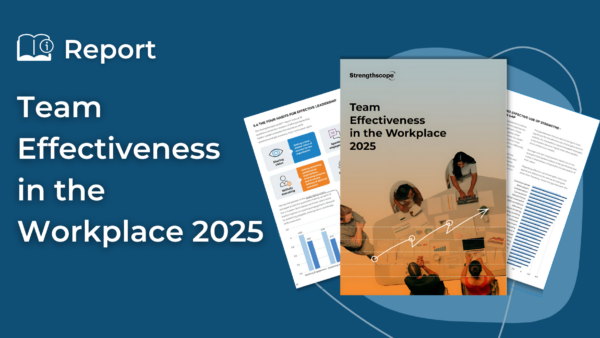The ability to persuade co-workers and other stakeholders (customers, investors, suppliers, etc.) is arguably the most important skill a leader requires to energise people and get things done in 21st century organisations. Rigid ‘command and control’ structures are giving way to flatter, fluid and highly matrixed organisations and this requires skilful relationship building and influencing upwards, sideways and downwards (often without formal authority) to achieve both your own and the company’s goals.
Managers and leaders without good communication and influencing skills often get stuck, derail or are overlooked for promotion, regardless of their technical and functional excellence. Our extensive experience with leaders at all levels indicates that this is the skill area leaders struggle with the most, yet it is arguably the most important skill set for strong leadership. Some of the most important steps to unlock your persuasive powers are:
Focus on possibilities and solutions
As we saw during both the Brexit and Trump political campaigns, fear-based persuasion can work, especially over the short-term, as it serves to motivate people to move away from the perceived threats and problems highlighted by leaders. However, while this approach may well be useful for bringing about rapid changes in focus and behaviour to deal with short-term crises and challenges, it can often lead to a sense of powerlessness, panic and loss of control. It will almost certainly lead to a focus on the short-term and undermine creative problem-solving, teamwork and innovation, which most companies rely on to sustain growth and competitiveness.
Leaders who focus primarily on solutions, strengths, possibilities are far more likely to pull people towards them and inspire people to connect with the vision and/or outcomes they are trying to achieve. Let’s not forget the powerful example provided by the late South African president, Nelson Mandela, who unified the country with his vision of a “rainbow nation” for post-apartheid South Africa.
Build trust and credibility
Trust is a vital ingredient to persuasion. If co-workers don’t see their leaders as trustworthy, they are unlikely to engage with them, let alone be persuaded by their arguments. Leaders can increase their trust by:
- Showing they trust others in their daily interactions, including getting to know them on a personal level, asking for their help in areas of strength and listening in a non-judgemental and curious way.
- By acting in an authentic and consistent way in accordance with their strengths, values and purpose.
- Showing vulnerability by acknowledging weaker areas and other performance risks; in other words, not trying to come across as “superhuman”.
- By delivering on what they commit to and not making excuses for shortfalls.
- By giving credit to co-workers for their efforts and contribution to achievements, as well as taking ownership for mistakes and problems arising from their decisions.
As well as cultivating high trust relationships, building credibility also involves demonstrating your expertise to others. Several ways to do this include:
- Don’t take your expertise for granted. Explain to your co-workers the value of your expertise in helping the team deal with day-to-day tasks and challenges.
- Ensure you provide considered and sound advice to others. Ask for additional time to think through the problem and alternative solutions if the problem is not urgent.
- Don’t wait to be asked for help, take initiative to help others in areas where you have expertise.
- Volunteer for projects and assignments where your expertise will be leveraged and ideally, stretched.
- Ensure you remain up-to-date with the latest developments in your area through ongoing training, education and building your professional network.
- Bringing in external experts to endorse your approach or provide additional input as required.
Focus on overall outcomes
Many leaders get caught up in defending their positions or own agendas rather than focusing on win-win outcomes for the relationship as well as the business. This is what William Ury, Harvard Fellow and author of the best-selling book Getting to Yes, calls “building the golden bridge”. When the conversation gets hijacked by bargaining over individual interests and positions, only one party can win and in many cases, both lose. However, by identifying the overall goals and working collaboratively to achieve these, both parties will generally be better off. The questions I suggest asking to move the discussion to a win-win situation include:
- What outcomes are we both trying to achieve that will help the team/organisation?
- Where do our goals and interest overlap?
- What will it look like if we are successful?
- What are the risks if we fail?
- How can we change the way we work together to ensure we succeed?
Tune in to their point of view
The vast majority of leaders still prefer advocacy and a ‘hard-sell’ approach in the mistaken belief that this is the best way to persuade others. However, the greatest influencers are experts at showing interest in others and listening to their points of view; they remain open-minded and inquisitive about their co-workers and the views they have. By doing this they build trust and an emotional connection with those they are seeking to influence. They learn the art of what we call “deep listening”, which is not simply listening to the person, but tuning it to their emotions and context. Through doing this, they find mutually beneficial pathways to the best possible outcome.
Network to boost your energy and influence
Networking is crucial to gaining broader and deeper influence in your organisation, as well as outside it. Studies show that networking is crucial to the success of leaders, managers and entrepreneurs. Networking involves not just building a good online network using professional networking sites such as Linked In, but also being intentional about getting to know people outside your immediate team. It involves broadening your sphere of influence in a purposeful and disciplined way with a select and diverse group of people (including superiors, customers, fellow professionals, and friends) who can help you achieve your business and personal goals. Don’t overdo your network as too many connections will prove difficult to manage and leverage effectively. It may also lead others to conclude that you are consumed by your own sense of self-importance or wasting valuable time on pointless meetings.
Using a stakeholder mapping tool like the one below will help you understand the nature of your existing relationships better, enabling you to work on improving your influence with stakeholders who are most important to your success. Try plotting key stakeholders according to:
- The quality of your relationship with them. To what extent have you already got a good relationship of trust and openness? To what extent can you rely on their support?
- The amount of influence they have over your work and career. In other words, the extent to which you rely on their support, contribution and guidance.
Identify specific actions you can take to build common ground and improve your relationships with stakeholders who have most influence over your work, especially those where your relationship with them is currently not strong.
Have the courage to speak up
There are too few leaders today who have the courage to speak their mind on tough issues that are important to others, especially where these are contrary to mainstream opinions or those held by top management. By voicing your opinions with candour and openness, rather than treading a cautious, politically correct line, you will gain credibility and respect from co-workers, even if they don’t agree with your views. However, your opinions clearly need to be backed up by facts and good judgement otherwise you risk losing trust and influence so it’s best not to assert your opinions in areas where you have little expertise. Courage can also be overplayed resulting in damage to performance and relationships. When courage goes into overdrive, especially when combined with self-confidence, it can come across as arrogance, recklessness and hubris. It is therefore important to balance courage with empathy and humility to ensure you don’t inadvertently overpower and alienate people.
Make commitments public
Research shows that people generally honour commitments they make if these are specific and public. This is why the best sales people are highly effective at summarizing and closing the deal, both verbally and in writing during the contracting period.
Similarly, leaders should ensure they find opportunities to capture commitments from co-workers once they have reached a beneficial outcome. For example, if a peer agrees to sponsor a time-consuming project, the leader can arrange for this to be communicated to the top team during a joint announcement or presentation at the earliest opportunity. The leader can also invite his/her co-worker to summarize key points of agreement and next steps verbally and in an in-mail after tough negotiations to improve the chances of effective follow through.
Work on your charisma
Charisma is about a leader’s charm, confidence, likeability, power and personal magnetism. Like any other leadership strength, is only powerful in helping a leader and their organisation succeed if it is used in the right way and to achieve shared goals. When used with caution, charisma can be very powerful in helping the leader energise people to support his/her vision and goals. Despite what many believe think, charisma is not fixed and can be developed by leaders. Steps to build one’s likeability and charisma include:
- Smiling at people and being generally positive and upbeat; few people like miserable or dull co-workers.
- Having a good sense of humour, including being able to laugh at your own mistakes and vulnerabilities.
- Being approachable and warm, including going out of your way to help others by providing assistance, expertise or information. If people see that you care about their needs as well as your own, they are more likely to like you.
- Asking others for their help and showing gratitude and appreciation when this is given.
- Inviting others to give you feedback on how you’re doing and telling them how much you appreciate this when provided.
- Learning to be confident when talking or presenting to others. Remember that being good at presenting to others is a skill and can be developed through training and practice. That’s why even the best TV presenters spend so much time undergoing media training.
Your goal shouldn’t be to get everyone to like you, as this is not necessary to achieve success and can actually undermine it if you become a “people pleaser”. The aim is to ensure you have enough trust and respect to influence others to help you achieve goals that matter to you, the team and organisation.
The key role of leaders is to ensure organisational goals are achieved and their business contributes positively to society through unlocking and optimising the immense strengths, skills and ideas of their people. This involves persuading co-workers and other stakeholders to provide support and/or resources, even when they are initially reluctant to get involved. They therefore need to build skill in building relationships and influencing others in fast-changing, matrixed and virtual organisations using skills and techniques that are strongly people-cantered, including listening, empathy, curiosity, compassion and collaboration. By ensuring they are easy to relate to and developing these skills, leaders can win others over, get things done quicker and better and fuel a positive, collaborative culture that lights up the organisation.
James Brook
Recommended Reading
Cialdini, R.B. (2007). Influence: The Psychology of Persuasion. New York: Harper Collins.
Conger, J.A. (1998). The Necessary Art of Persuasion. Harvard Business Review OnPoint, Spring 2017, 76-86.
Fisher, R., Ury, W. & Patton, B. (1991). Getting to Yes: Negotiating an Agreement Without Giving In. London: Century Business.










